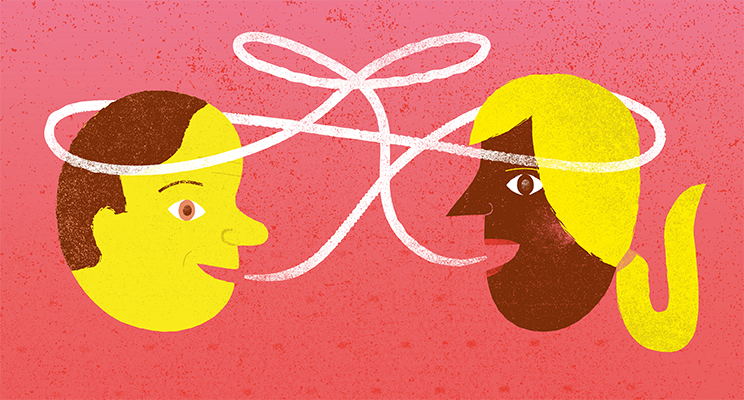About the power of dialogue
In my previous blogs I paid extensive attention to the importance of diversity and inclusion for business and society. I also made it clear that there are no quick fixes to create a coherent culture in an organization. If we genuinely want more coherence and more acceptance of difference, then we will have to investigate and understand what determines our behavior.
Neuropsychologists do a great deal of research into the functioning of our brain and our behaviour. The problem here is that measuring one individual doesn’t tell us much: insights only arise when you measure a group of people by taking an average of them. The same thing happens in diversity studies: abstractions of groups are presented as ‘truth’. Measuring is knowing, right? This is a misconception in my opinion. The human brain is always in motion, just like a river. In order to make an exact empirical causal observation, you need two fixed points. In other words: you deprive an individual of any degree of meaning by placing him or her in a framework of statistical averages.
We tend to get stuck too much in the ‘upper current’, in what is visible − and we do everything we can to stay there. But in order to really understand behaviour, we need to explore the ‘undercurrent’. Perhaps the best way to illustrate this is with an example. Suppose I see a tree (upper current, visible). Then a presentation of that tree is formed in my brain. It is not the real tree that is in my head, but an image of a tree. But unfortunately, I also have thoughts about trees (undercurrent, invisible). As a child, for example, I once fell out of a tree and that’s why I associate trees with danger. This is a representation of that tree in my brain, a ‘colored’ presentation. In short: perceived images and thoughts about that image mix and, as a matter of fact, I can’t look at a tree neutrally anymore because of my thoughts. It should be clear that the same applies to our view of humanity: our opinion of ‘the other’ − whether male or female, older or younger, native or immigrant − is always coloured by personal experiences. None of us is free of prejudice.
Our thoughts are an accumulation of our experiences, what we have inherited from our parents, from our teachers, our faith, and so on. Often we don’t even notice that our thoughts interfere with our perceptions and thus affect them. In itself, this mixing is not a problem either: it becomes problematic only if we are not aware that this mixing is taking place. Because when our thoughts determine our perceptions, our conditioning becomes an implicit norm. Our thoughts create ‘facts’, as it were, that are not facts. In addition, we are also social beings: we are naturally inclined to conform to the group. This collective pressure only anchors these ‘facts’ more deeply in our thoughts. For example, if there are just enough people who say that Hans is ‘an enormous leadership talent’, that quickly becomes the dominant opinion. The image that Hans is a talent is created under collective pressure in a way.
It is essential to suspend our presuppositions
The process I describe above explains to a large extent the dysfunctionality in teams. If we continue to communicate or cooperate with each other on the basis of images we have of each other, this always leads to conflict and thus to disturbed relationships. The other way around: if we want high-performing teams or if we want to pursue a specific goal, we will have to look not only at behaviour, but above all at what affects and determines our behaviour.
Since our presuppositions are largely determined by the collective, we will therefore have to enter into a dialogue with each other. There are many methods of dialogue but, as far I am concerned, the purest form is the method developed by physicist and philosopher David Bohm. The basic principle of Bohmian dialogue is that a constructive group conversation is aimed at reaching a common understanding and avoiding sinking into a battle to hear your own thoughts confirmed. Bohm distinguishes three basic conditions a dialogue must meet. First of all, all participants should ‘suspend’ their presuppositions. Secondly, all participants should regard each other as fellow researchers and, finally, there must be a ‘facilitator’ who keeps the dialogue on track.
In a dialogue, there is no place for hierarchy or authority. Nor is there any objective or agenda, at least not initially. It is essential to ‘suspend’ our presuppositions so we can participate in the creation of a coherent whole. You learn to listen more attentively because you become more aware of your presuppositions, which in turn leads to interaction on a deeper level. The connection (relationship) with the other or the group becomes stronger because your self-observation becomes stronger.
This is not an easy process and requires a great deal of patience and practice. But at best, it does lead to coherent teams in which diversity and inclusion are truly embraced, and which are therefore capable of more creativity and participation. And that is what we need in the Netherlands in these times of rapid technological development.



